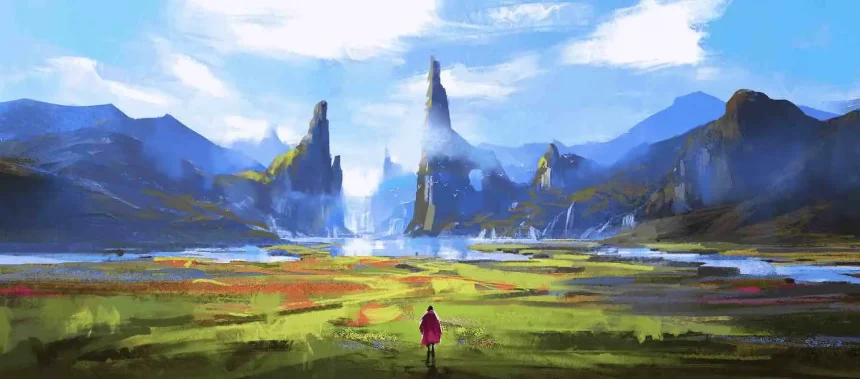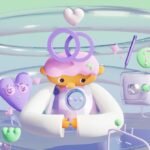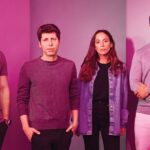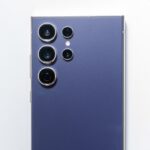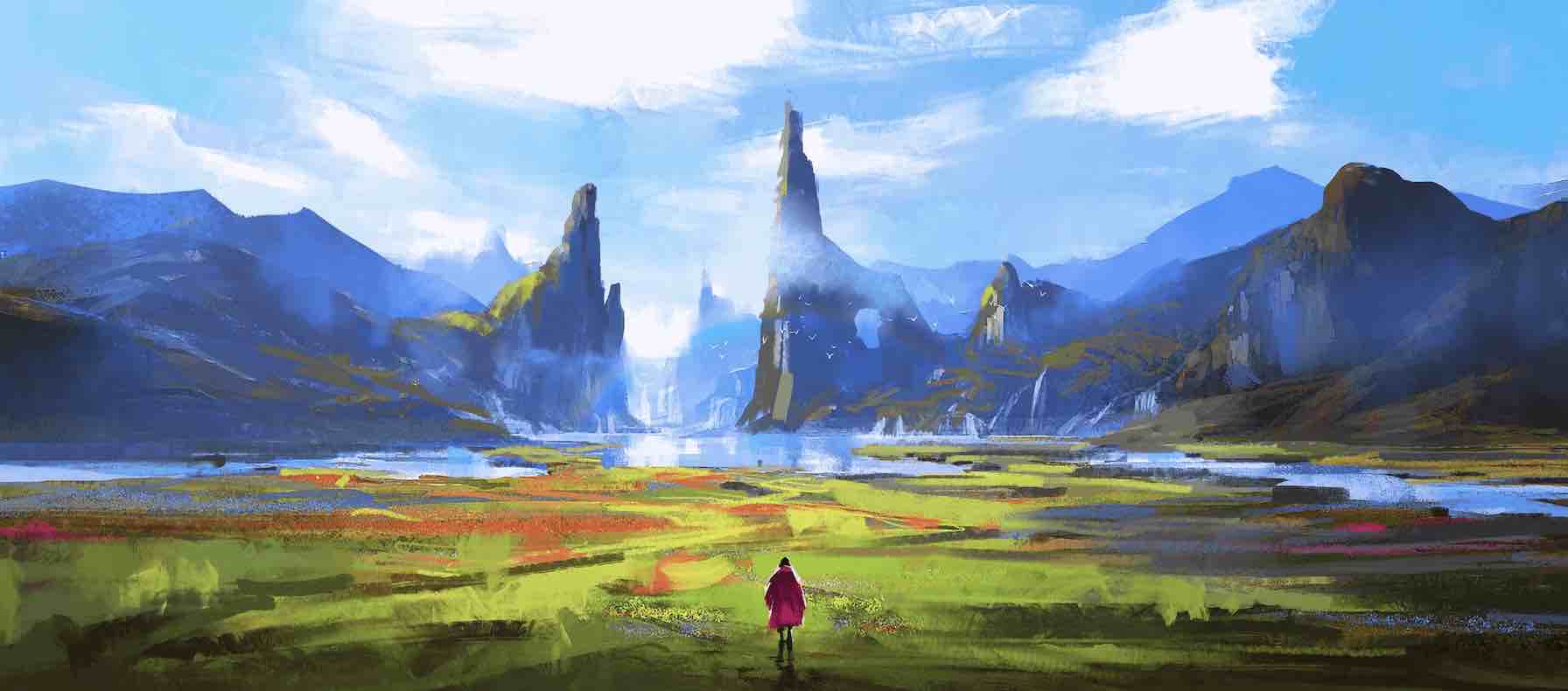
Introduction
Ever since human artists began creating masterpieces, they have asked to be recognized for their work. In the United States, this recognition of intellectual property was signed into law in 1790. Throughout the centuries, artists have also regularly worked with their peers, collaborating to produce works that would transcend one person’s creative powers.
Over the past decade or so, human artists discovered a new collaborator. Art generator tools based on artificial intelligence (AI) technology have become bonafide collaborators for modern artists when it comes to music, imagery, and other expressions of creativity. Some of these tools are capable of creating their own output without human input or interaction beyond specifying a subject. But do the output images of these generators count as true artistic choices that can be protected by copyright ownership? And who owns the rights to the final creation of these computer-generated works? Here is a look at the implications for copyright protection with AI-generated art.
AI art cannot be copyrighted. The question of who owns art created by AI is a complex and controversial issue. While AI is responsible for generating the artwork, it is ultimately the human creators who programmed and trained the AI algorithms. Therefore, the ownership of AI-generated artwork is often contested between the AI itself, the individuals or companies who developed the algorithms, and the individuals or companies who commissioned or trained the AI.
As for copyright, AI art can be copyrighted if it meets the legal requirements of originality and creativity of human input, just like any other form of creative work. However, the application of copyright law to AI-generated artwork is still a relatively new and developing area, and it remains to be seen how courts and lawmakers will address these issues in the future.
Also Read: Famous Pieces of AI Generated Art
AI art generator tools
AI technology has found its way into every corner of our lives, so it is only natural that creative professionals would use art generator tools to their advantage. Whether it was built for collaboration or to work independently, art generation software has become a desirable part of the creative process for numerous concept artists. The reason is simple: these programs can generate a constant stream of unique artworks. Within seconds, they produce millions of image options.
While not every one of those pieces may be an actual masterpiece, they could certainly deliver inspiration to human artists and truly inspire collaboration Just a few years ago, AI image generators required a reasonable level of programming knowledge as well as artistic human input.
Over the past year or so, these requirements fell by the wayside, thanks to a new generation of art generators, including Stability AI, DALL.E2, and Midjourney:
- Stability AI uses Stable Diffusion as a foundational model and aims to offer software that can activate humanity’s creative potential. Its DreamStudio suite already allows artists to create new designs through a text-to-image interface.
- DALL.E2 comes out of the same laboratory as ChatGPT. Created by the team behind OpenAI, this generator can produce realistic artwork and images based on natural language. Features like outpainting allow artists to put a new take on classical masterpieces, too. They take the contents of an existing painting, for example, and allow artists to extend what is there now beyond the existing frame.
- Midjourney is another independently funded laboratory working on the intersection of art and technology. Their product is currently in the Beta stages, but its community showcase demonstrates the potential of this AI art generator.
As more artists are embracing collaborations with machines and the possibilities these deliver for their work, we are likely to see these tools become smarter. It is just as likely for other tools to enter the market and add to the competitive landscape.
Also Read: Top Online AI Art Generators and Other Art Resources
Copyright
With collaborations between human artists and machines growing, what are the legal concerns involved? Human art creations, whether they were created in collaboration or by a single individual, are protected by copyright protection laws.
In the United States, these laws were first enacted in 1790 under the country’s new constitution. Their origins can be traced back to English copyright law in the 15th century. International copyright treaties protect rights across borders. But how can laws that were effectively devised hundreds of years ago apply to a technology or a form of intellectual creation that is just emerging?
Let us first look at what copyright registration and protection laws cover today. These laws protect the intellectual property of a person. For writers, this would be the words they put on paper or enter into a word processor. For photographers, copyright laws deliver protection for the images they produced. And for other artists, copyright laws recognize their creative output, whether it is a painting or any other piece of art.
Being recognized as the owner of a piece allows artists to sell permanent or temporary rights to reproduce their pieces. For many artists, this is a major source of income.
Contracts
Copyright law enables a creative professional to enter into a contract with a potential buyer as long as their artwork meets the minimum standards set out by the Copyright Act. Those standards require the artwork to be an original, fixed in a tangible medium, and demonstrate a minimal amount of creativity.
Unsurprisingly, current copyright law does not specifically mention human authorship or artificial intelligence. However, current interpretations by the U.S. Copyright Office have made it clear that securing a copyright claim for a work of art requires human involvement in the creation of the work.
Within current legal frameworks, there is enough flexibility to include works that combine the creative process of humans that was supplemented by AI-created art. But there is no recognition of AI-generated assets that had no human involvement.
Commercialization
AI art generator users are free to commercialize their creations, but they do not necessarily have exclusive rights. Some image generators reserve the right to commercialize images that users created for their own use. Moreover, users need to be aware that terms of use could change at any time and with little notice.
Within the framework of copyright and the recognition of intellectual labor, there are potentially other legal concerns and additional copyright concerns about AI-generated works.
Tools like DALL.E2’s outpainting function use an existing artwork as a foundation for their new image. Depending on the copyright protection of that work, they may be infringing on that owner’s rights. Plus, the training phase of the generator is also giving cause for concern. Questions are being asked whether feeding existing artworks into an algorithm to train it already constitutes an infringement of existing copyright protections.
As companies like OpenAI are looking to commercialize AI art generators, they would need to find answers to those questions.
Who Owns AI’s Art?
Another question relates to who owns the output of an AI art generator, be it a simple AI-generated image or an AI-generated masterpiece? Compare the situation to that of a painter in front of an empty canvas. The painter has paid for the canvas, the paints, and the paintbrushes, so there is no doubt that they own the final creation under intellectual property law.
Things become less clear when we approach the interface of intellectual property & technology. An artist looking to collaborate with an AI art generator has created a piece that they are looking to enhance with the help of software. Does that mean the owner of the software gains rights? To answer that question, we need to look at the fine print in the terms of use of the tool in question.
Open AI, the owners of DALL.E2 have carefully worded their terms to give the rights to the (human) creator who delivered the original creative input. At the same time, they make it clear that the nature of machine learning and artificial intelligence means that similar results may be delivered to another creator. That second creator would then own the second output.
Can AI Art Be Copyrighted?
Under current U.S. copyright law, AI-generated artwork cannot be protected by a potential copyright owner. What does that mean for collaborations between humans and an AI-generated piece? A good place to look for an answer is one of the most recent court decisions relating to collaborative work.
The graphic novel “Zarya of the Dawn” by Kris Kashtanova combines a story written by a human with images produced by Midjourney but laid out and produced by Kashtanova. Whilst the entire work was originally granted copyright protection, a recent court decision caused the U.S. Copyright Office to change course.
Today, Kashtanava has been recognized as the owner of the story and the arrangements, but there is no copyright protection for the actual images produced by Midjourney. Those images are in the public domain. While this decision is one of the first relating to purely AI-generated content, it could be an indicator for future legal cases deciding copyright issues of valuable content.
AI Art and Copyright Infringement
AI art generator owners like OpenAI are actively working to protect themselves against potential legal action for copyright infringement, starting with their training dataset. Artists using these tools cannot upload images that contain recognizable faces or brands, for example.
In addition, the AI does not deliver when prompts ask to create images of politicians, celebrities, or other public figures. On top of that, the software includes restrictions that protect users against harmful or violent content.
There is currently no complete protection from intentional or unintentional unauthorized use of copyrighted images. But experts believe that the individual measures put together offer an acceptable level of security.
Predictions for the Future of AI Art Copyright
Without the proverbial crystal ball, it is hard to predict the exact implications for copyright law of AI-produced art. As more artists are exploring the potential of these generators, more cases will likely be brought forward to arrive at a decisive interpretation of what can be protected by ownership of copyright and what cannot.
The relationship between creators and art generators appears relatively clear at the moment. But there are no guarantees that AI-generated imagery will not infringe on ownership rights held by a third party. Therefore, artists are well advised to proceed with caution when they are creating and commercializing their machine-supported collaborations.
Also Read: AI ethics and laws
Conclusion
The rise in AI as part of the creative process is posing fundamental questions about intellectual property & technology to the legal and artistic community. As technology develops, so does the possibility of copyright infringement. As artists continue to collaborate with machines, we will likely see major changes in copyright law, both in the U.S. and with international copyright treaties.
References
Brittain, Blake Blake Brittain. “AI-Created Images Lose U.S. Copyrights in Test for New Technology.” Reuters, 23 Feb. 2023, https://www.reuters.com/legal/ai-created-images-lose-us-copyrights-test-new-technology-2023-02-22/. Accessed 24 Mar. 2023.
DALL·E 2. https://openai.com/product/dall-e-2. Accessed 24 Mar. 2023.
DALL·E: Introducing Outpainting. https://openai.com/blog/dall-e-introducing-outpainting. Accessed 24 Mar. 2023.
Office, U. S. Copyright. “Copyright in the Age of Artificial Intelligence.” U.S. Copyright Office, https://www.copyright.gov/events/artificial-intelligence/. Accessed 24 Mar. 2023.
—. “What Is Copyright?” U.S. Copyright Office, https://www.copyright.gov/what-is-copyright/. Accessed 24 Mar. 2023.
“Stability AI.” Stability AI, https://stability.ai/. Accessed 24 Mar. 2023.
https://www.midjourney.com/showcase/recent/. Accessed 24 Mar. 2023.



